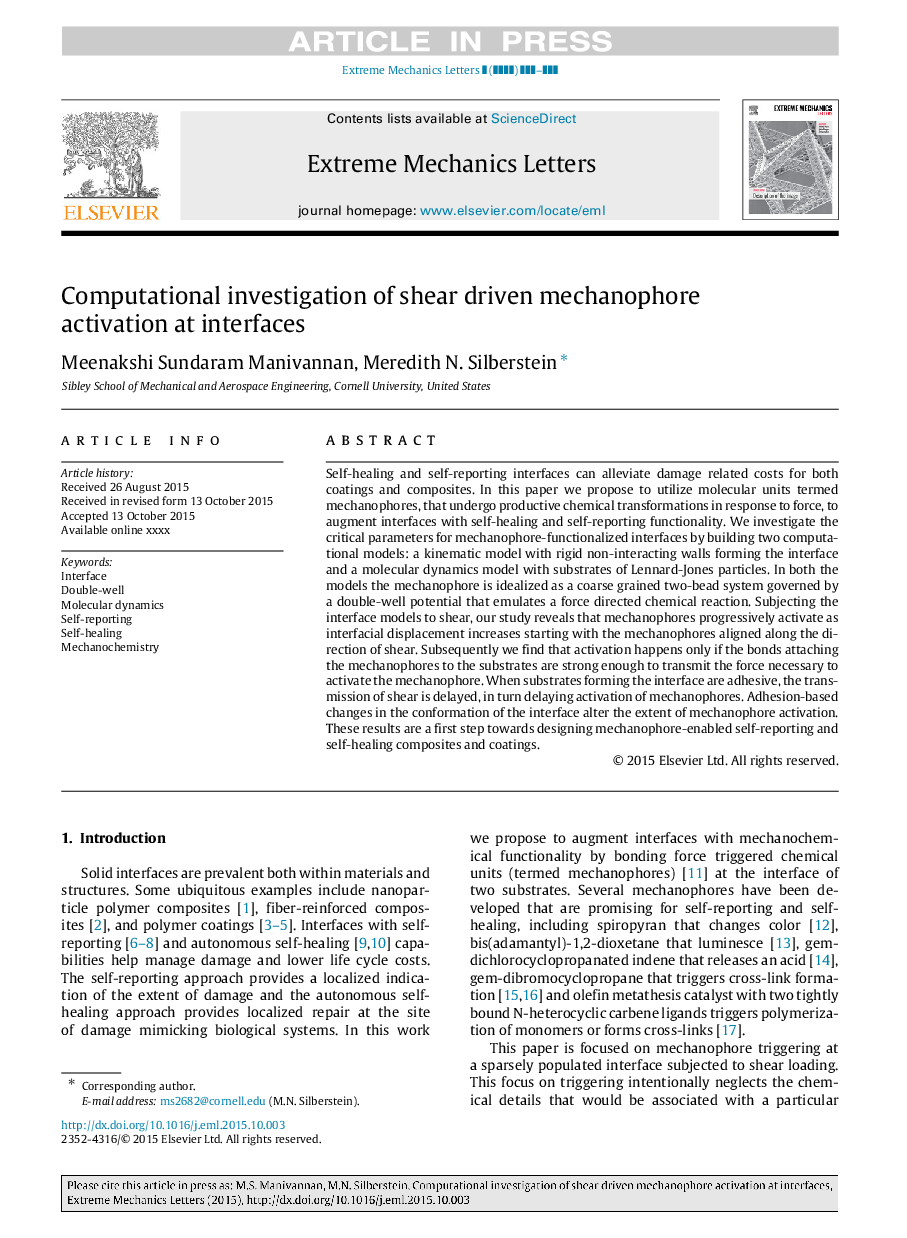| Article ID | Journal | Published Year | Pages | File Type |
|---|---|---|---|---|
| 5014573 | Extreme Mechanics Letters | 2016 | 7 Pages |
Abstract
Self-healing and self-reporting interfaces can alleviate damage related costs for both coatings and composites. In this paper we propose to utilize molecular units termed mechanophores, that undergo productive chemical transformations in response to force, to augment interfaces with self-healing and self-reporting functionality. We investigate the critical parameters for mechanophore-functionalized interfaces by building two computational models: a kinematic model with rigid non-interacting walls forming the interface and a molecular dynamics model with substrates of Lennard-Jones particles. In both the models the mechanophore is idealized as a coarse grained two-bead system governed by a double-well potential that emulates a force directed chemical reaction. Subjecting the interface models to shear, our study reveals that mechanophores progressively activate as interfacial displacement increases starting with the mechanophores aligned along the direction of shear. Subsequently we find that activation happens only if the bonds attaching the mechanophores to the substrates are strong enough to transmit the force necessary to activate the mechanophore. When substrates forming the interface are adhesive, the transmission of shear is delayed, in turn delaying activation of mechanophores. Adhesion-based changes in the conformation of the interface alter the extent of mechanophore activation. These results are a first step towards designing mechanophore-enabled self-reporting and self-healing composites and coatings.
Related Topics
Physical Sciences and Engineering
Energy
Energy Engineering and Power Technology
Authors
Meenakshi Sundaram Manivannan, Meredith N. Silberstein,
